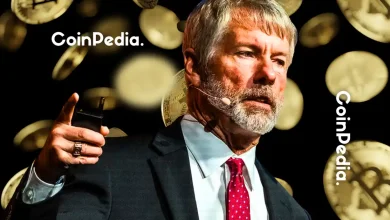
Balaji advises India to avoid costly wars like the US post-9/11 response.
He suggests India use smart economic strategies and crypto to weaken Pakistan financially.
Balaji proposes a long-term approach involving economic influence and crypto adoption for regional stability.
In a world where conflict often seems like the only solution, renowned crypto expert and commentator Balaji Srinivasan is offering a different approach for India to handle Pakistan-backed terrorism. His insights blend history with modern financial strategies, presenting a plan that could change how nations deal with global challenges.
Avoid the Mistakes of the Past
Srinivasan draws a sharp comparison between the aftermath of 9/11 and India’s current situation. He argues that the United States made a costly mistake by reacting to terrorism with expensive wars that drained resources and indirectly helped countries like China grow stronger. Balaji warns that Pakistan might try to draw India into a similar trap – pushing India into a war that would weaken it rather than strengthen it.
Instead of military action, Srinivasan suggests a smarter, more sustainable approach: focusing on economic strategy. By using its growing economic influence, India can quietly weaken Pakistan without firing a shot.
The Smart Game: Economic Power Over Military Force
Srinivasan believes India should focus on two main things: securing its borders and using special forces to address immediate terror threats. But the bigger battle, he says, is cutting off Pakistan’s access to global financial support.
Rather than engaging in expensive and destructive wars, India should work diplomatically to stop Pakistan from getting financial aid from the U.S. and Europe.
Crypto: India’s Secret Weapon?
This is where cryptocurrency enters the picture. Balaji sees India’s growing crypto economy as a key tool. By strengthening its crypto infrastructure, India can reduce its reliance on traditional banking systems, which can be vulnerable to external pressures. With crypto’s decentralized nature, India can maintain financial strength while pushing Pakistan out of global markets.
Crypto, Srinivasan argues, offers India a level of financial freedom that traditional systems cannot. It’s about creating a new, secure economic framework for India – one that’s less dependent on banks and international financial institutions.
Convincing the West
India should also use its growing economic power to convince Western nations, especially the U.S. and the U.K., to stop trading with or funding Pakistan. India’s massive consumer market and rapidly growing economy can offer the West better deals, making it harder for Pakistan to survive without Western financial support.
By shifting global trade and financial support towards India, India can weaken Pakistan’s ability to sponsor terrorism and destabilize the region.
The Long-Term Vision
Looking ahead, Balaji suggests that India, in partnership with China and Gulf countries, could play a role in peacefully changing Pakistan’s leadership over time. This would involve careful use of economic power, oil, and crypto to create conditions that lead to a shift in leadership within Pakistan.
Balaji Srinivasan’s message is clear: don’t react with emotions. Instead, play the long game. By combining economic strength, smart diplomacy, and the power of cryptocurrency, India can build a safer future—not just for itself, but for the entire region.
Never Miss a Beat in the Crypto World!
Stay ahead with breaking news, expert analysis, and real-time updates on the latest trends in Bitcoin, altcoins, DeFi, NFTs, and more.








